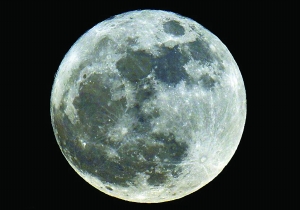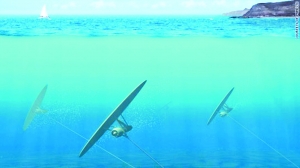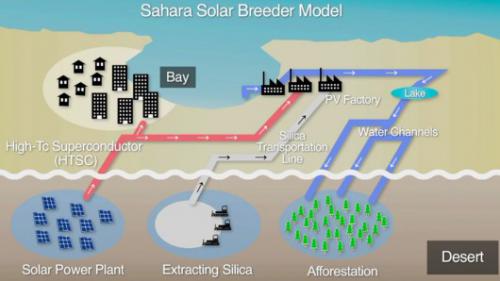On May 29, Germany announced that it would completely abandon the use of nuclear energy by 2022. Fossil energy on Earth will one day be exhausted. Nuclear energy has been used as the most promising method to replace fossil energy. If we really must give up nuclear energy, where will humans go to get energy in the future?

Make the Moon Bigger Mirror to Transfer Energy to the Earth
According to reports, Japanese scientists announced on the 25th a plan with science fiction, trying to turn the moon into a giant mirror manipulated by robots, used to "reflect" solar energy to the earth. According to this plan, a large area of ​​the moon will be covered by solar panels, and the captured solar energy will be transmitted back to Earth to meet global energy needs.
It is reported that this ambitious plan, known as the “Month of the Moon,†will transmit 13,000 terawatts of continuous solar energy to the earth receiving station via laser or microwave. The plan was announced by the research department of Japan's construction giant Shimizu Construction Co., Ltd. According to the plan, the area of ​​more than 10,000 kilometers around the Moon’s equatorial Yangyang will be covered with solar panels, with a total width of about 400 kilometers for solar energy transmission. The width of the antenna will reach 20 kilometers.
After the March earthquake and tsunami caused a nuclear accident at the Fukushima Daiichi nuclear power plant, Japan accelerated its search for alternative energy sources. When the “Month of the Moon†plan is put into effect is still unknown. If implemented, this will be the largest public infrastructure ever constructed.

Underwater kite turbine gets energy from waves
Wave generators are usually designed in the shape of sea snakes, placed on rolling waves, gathering the kinetic energy of the waves and converting them into electricity. However, Minesto Renewable Energy, Sweden, has taken another approach by combining wind power and wave power to create an innovative underwater kite turbine. Each of the underwater kites spans 8 to 14 meters and is attached to the lower abdomen of the turbine. The kite squats on the bottom of the sea and can "fly" with the movement of the tide.
Like the principles of tidal turbines, the blades of a kite turbine are also rotated by passing tides. However, the action of the kite's dive can increase the speed of the water flowing through the turbine by a factor of 10, similar to the wind cutting method used when the sailing boat gathers the sailing speed. In addition, the kite maintains neutral buoyancy and therefore does not sink as the tide turns, and the turbine port also prevents fish from entering.
Minesto's managing director Andr Jensen told the Guardian that the kite could work at a flow rate of 1 to 2.5 meters per second, while the first generation of equipment required more than 2.5 meters per second. Depending on the location and size, each kite can generate 150 to 800 kilowatts and is deployed in waters 50 to 300 meters deep.

Sahara desert itself transformed into solar power plant
According to the report of the Physicists Organization Network, Algeria and the University of Japan are jointly conducting solar projects in the Sahara, and plans to transform the world’s largest desert into a gathering place for solar power stations. It is hoped that by 2050, the current produced in this area will be able to meet the current The needs of the world.
At the beginning of the project, they planned to build a silicon production plant in the Sahara desert to process the silica in the sand into highly pure silicon for the production of solar panels. Then use these solar panels to build solar power stations. The electricity generated by the power station can be used to build more silicon production plants. More silicon production plants can produce more solar panels and generate more electricity. Li Shuxiu, head of the Japanese scientific research group and of the University of Tokyo, said that although no one had previously used desert sand as a source of high-purity silicon, it is clearly the best choice for this purpose. Using it will certainly produce purity. Very high silicon.
Liu Xiuchen said that the energy produced by solar power plants will be sent out in the form of direct current through high-temperature superconductors. This process is more efficient than using AC power for transmission. According to his assumption, a large ultra-cold high-voltage direct current (HVDC) power grid can deliver at least 100 gigawatts of electricity to places 500 kilometers away. He said that even if such a power grid needs to use liquid nitrogen for refrigeration, it still has a cost competitive advantage. High-temperature superconductors operate in a low temperature environment of approximately minus 240 degrees Celsius.
The Sahara Solar Project aims to meet 50% of the world's electricity demand by 2050.
